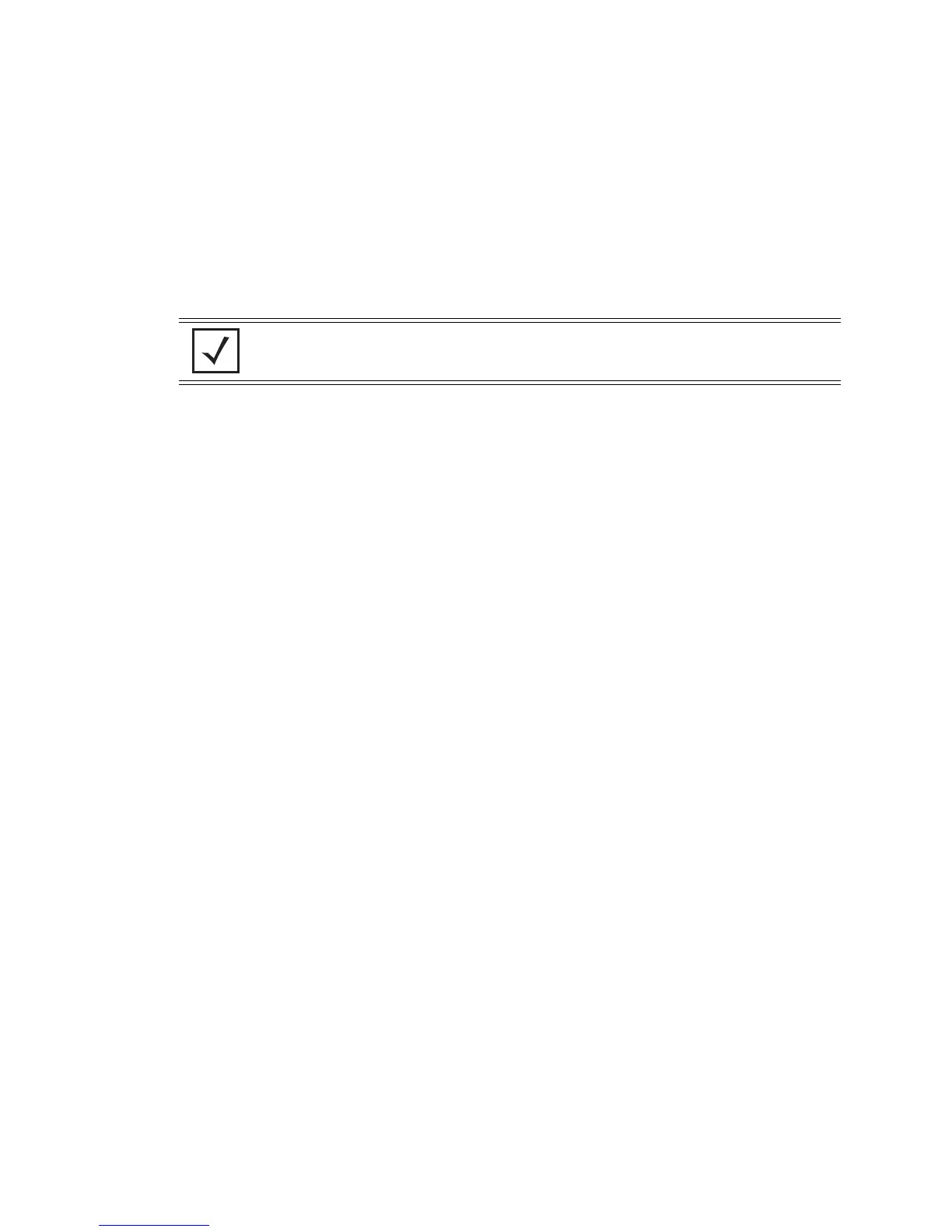4-134 Motorola RF Switch System Reference Guide
11.After first selecting a channel, select a power level in dBm for RF signal strength in the Desired Power
(dBm) field.
The optimal power level for the specified channel is best determined by a site survey prior to installation.
Available settings are determined according to the selected channel. Set a higher power level to ensure
RF coverage in WLAN environments that have more electromagnetic interference or greater distances
between the Access Port and MUs. Decrease the power level according to the proximity of other Access
Ports. Overlapping RF coverage may cause lost packets and difficulty for roaming devices trying to
engage an Access Port. After setting a power level, channel, and placement the RF output power for the
Access Port is displayed in mW. Default is 20 dBm (802.11bg), or 17 dBm (802.11a)
)
12.To configure optional rate settings, click the Rate Settings button to display a new dialogue containing
rate setting information. Instructions on configuring rate settings are described in Configuring Rate
Settings on page 4-103.
13.In most cases, the default settings for the Advanced Properties section are sufficient for most users.
If needed, additional radio settings can be modified for the following properties:
NOTE: After setting a power level, channel, and placement the RF output power for the
Access Port is displayed below in mW.
Antenna Diversity Use the drop-down menu to configure the Antenna Diversity settings for Access
Ports using external antennas. Options include:
• Full Diversity: Utilizes both antennas to provide antenna diversity.
• Primary Only: Enables only the primary antenna.
• Secondary Only: Enables only the secondary antenna.
Antenna Diversity should only be enabled if the Access Port has two matching
external antennas. Default value is Full Diversity.
Maximum MUs Sets the maximum number of MUs that can associate to a radio. The maximum
number of stations that can associate to a radio are 256.
Adoption Preference
ID
The Adoption Preference ID defines the preference ID of the switch.The value can
be set between 1 and 65535. To make the radios preferred, the Access Port
preference ID should be the same as adoption preference ID.
The adoption preference id is used for RP load-balancing. A switch will
preferentially adopt Access Ports, which have the same adoption-preference-id as
the switch itself.
Short Preambles only
(this is not seen in
RFS4000)
If using an 802.11 bg radio, select this checkbox for the radio to transmit using a
short preamble. Short preambles improve throughput. However, some devices
(SpectraLink phones) require long preambles. This checkbox does not display if
using an 802.11a radio.
